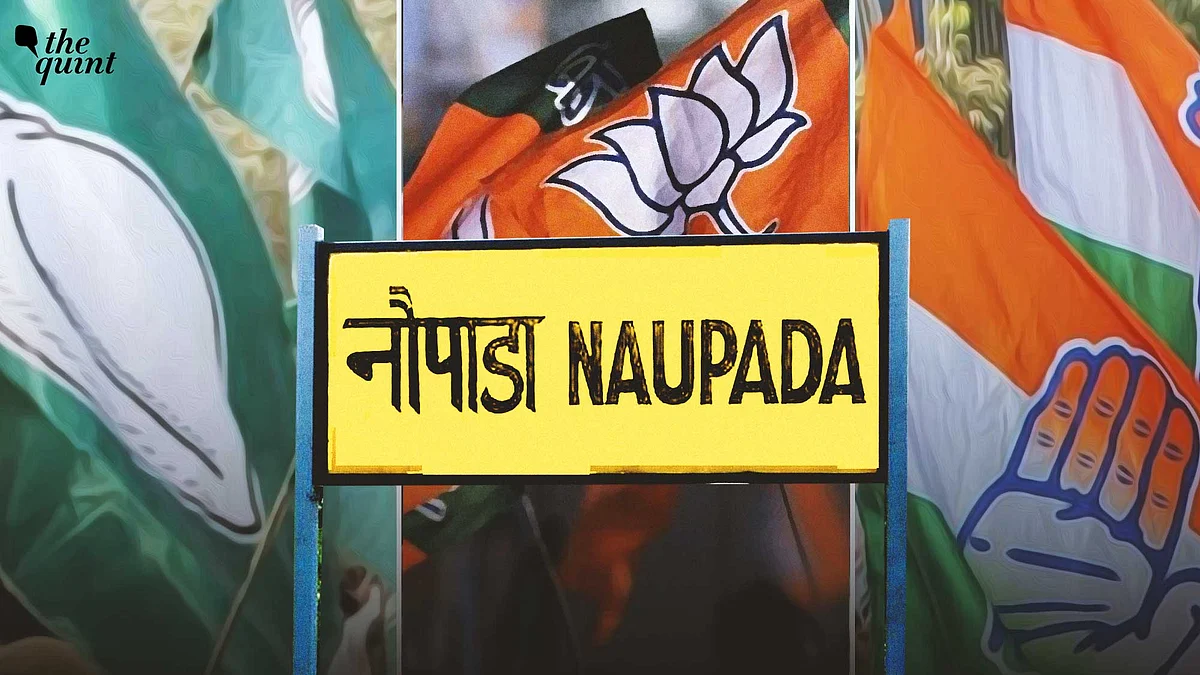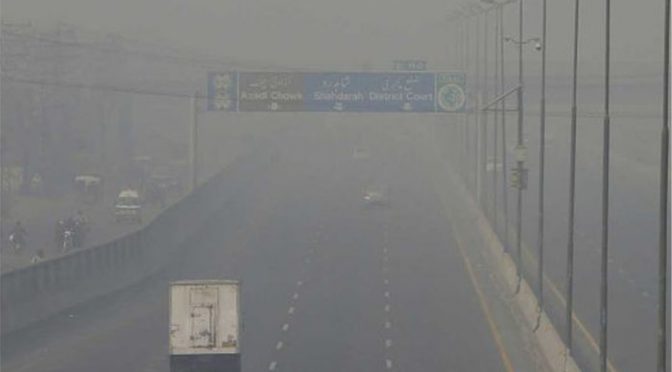Copyright thequint

The upcoming by-election of the Nuapada Assembly constituency in Odisha has already started to heat up, with the quiet alleys of the town in the state's destitute western region buzzing with political activity. The by-election was necessitated by the demise of Rajendra Dholakia, a four-term MLA from Nuapada and ex-minister of the Planning and Convergence Department, Odisha. Dholakia, a renowned leader of the Biju Janata Dal (BJD), had a deep connection with the people of the constituency and a long-term political legacy.The election is the first in the state since the BJD's fall in the 2024 Legislative Assembly elections in Odisha, when the BJP wrested power from the regional satrap after 24 years of rule. In a significant political turn, Rejendra Dholakia's son Jay Dholakia has joined the ruling Bharatiya Janata Party (BJP) and will contest the November bypoll from the BJP. The other key contenders are BJD's Snehangini Chhuria and Ghasiram Majhi, representing the Indian National Congress (INC). The polling is scheduled for 11 November 2025 while counting of votes will occur on 14 November, and the entire election process will conclude on 16 November, per the Election Commission notification.The election is being seen as a litmus test for the BJP's popularity in the state, months after former Chief Minister Naveen Patnaik took over as the Leader of Opposition. Seemingly, Dholakia's defection has left the Opposition embarassed, with Patnaik recently accusing the BJP of forming the government with “stolen votes" during a campaign rally and also accusing it for 'candidate chori'.As Naveen Sits in Opposition, the BJD Chief Must Build a Second Line of LeadersIn the 2024 Assembly election in Nuapada, BJD's late Rajendra Dholakia had won the seat, securing 61,822 votes (33.65 percent), followed by Majhi, who contested as an independent candidate, securing 50,941 (27.73 percent) votes. Contesting for the first time, the BJP's A bhinandan Panda, the son of Basant Panda, a former MLA, and BJP's state president of Odisha, stood third with 44,814 (24.39 percent) votes, and subsequently Congress’s Sarat Pattanayak with 15,502 (8.44 percent) votes.This election will be pivotal and could significantly impact and reshape Odisha's political landscape. Accordingly, there is an ongoing triangular tussle among the three parties—BJD, BJP, and INC—with each demonstrating their strength and power.According to Odisha's Chief Electoral Officer (CEO), there are 2.48 lakh registered voters in 358 polling stations, including 56 new ones in the Nuapada Constituency: the triangular political party's high-voltage political battles, extensive campaigning, mobilisation efforts, and fierce clashes.The upcoming election turns even more interesting with the BJD appointing 52 leaders as star campaigners at the grassroots level in an attempt to secure victory for feisty woman leader Snehangini Chhuria. Though an "outsider" in Nuapada, Chhuria is a former minister and two-time MLA from the Attabira Assembly segment in neighbouring Baragarh district, and was sprung as a last minute surprise by the BJP following Dholakia's defection.The BJP appointed eight ministers as zone-wise campaigners and 40-star campaigners for the grassroots levels to mobilise and campaign for Jay Dholakia in what has now become a prestige battle. Meanwhile, the Congress, which has fielded known tribal leader Ghasiram Majhi, is relying on the leader's grassroots connect and the party's national star power. It has appointed 40 star campaigners, including several prominent national and state-level leaders, such as Kanhaiya Kumar, Sachin Pilot, Bhupesh Baghel, among many others. The by-election highlighted several challenges for the region. The Key issues influencing the polls include migration, employment, infrastructure difficulties, drought management, health, education, and access to safe drinking water, with 2.48 lakh voters deciding the result on November.But beyond the "prestige battles" and political rivalries occupying the minds of political parties and candidates, the voters of Nuapada seem to be facing very different issues which many feel are likely to remain invisible in this election season.Migration is a significant issue in Nuapada, one of Odisha's poorest and most backward districts. According to Down To Earth (2 April 2024), titled 'voting without voters,' approximately 50 percent of the district's main workers—around 75,000 are migrant labourers who venture out every year to different corners of the country in search of employment." Out of the 1.55 lakh-strong workforce, around 50 percent are migrant workers, and 63,000 are eligible to vote after data analysis. One of the key issues resulting in a migration crisis is prolonged unemployment, especially among the youth. This remittance economy is now a central election issue for all parties, exposing the voters' deep-rooted social, economic, and political challenges and aspirations.As Inequality Report Flags Poverty in India, Lessons from Odisha & BiharRabi Narayan Naik, Minister of Panchayat Raj and Drinking Water of Odisha, said they identify migrant workers and provide them with financial assistance. The government also appointed a task force to combat distress migration by targeting the brokers and taking legal action against them.” However, despite the task force, illegal migration has continued.Chanda Charan Tandi, a voter in Pandelbahali village, Nuapada, and currently working at a restaurant in Mysore, Bangalore, said:“It is not possible to come to cast a vote because there is no vacation and my manager has not allowed me to come. I wish I could return to my village to participate in this election, but I need at least Rs 2,000 for transportation. Who would provide this amount?"Tandi says there are many like him living far away, but that the district administration has taken no action in the matter. "I believe this system will not create employment opportunities or improve our lives," he said, and blamed endemic corruption for the voters' woes.Corruption, indeed, is rampant in Nuapada and continues to have a direct, devastating impact on the lives of ordinary people. It highlights the deep systemic problems that hinder development and violate the people's fundamental rights—corruption prevalent in every sector and level of government, from local to higher authorities. Serious irregularities and corruption have been reported in MGNREGA, Pradhan Mantri Awas Yojna, PMAY, and Public Distribution System (PDS) scams, etc. Contractors often use machinery like JCBs and tractors in the MGNREGA project, which is intended to provide jobs for manual labourers. This corrupt practice replaces the manual labourers.Additionally, many cases of non-payment of wages and corrupt government officials have reportedly misappropriated government funds by making false bills and withdrawing money without actual appointment of manual labourers or executing any work. This corruption has created a massive gap between the scheme's implementation and people's needs. Recently, the Odisha Vigilance department arrested two officials in Nuapada for a case of alleged embezzlement of Rs 18 lakh from the state's Climate Fund. In recent actions, Odisha vigilance has also arrested PEO, sarpanch, contractor, engineer, etc.Displacement is the other and perhaps the most critical issue in Nuapada. The area has an Adivasi and Dalit majority population, constituting 50 percent of the total population together and (35 percent are Adivasi). It if often these communities that end up paying for the region's development. There are five dams in Nuapada: Patora Dam, Tikhali Dam, Sundar Dam, Saipala Dam, and Dumerbahal Dam. These have severely impacted the local tribal communities by causing forced displacement and eviction.Data reveals that in each of these projects, 50 percent of the displaced individuals are tribal people, followed by Dalits and some other Backward Classes (OBC). Recently, the Lower Indra dam project, also known as the Tikhali dam, was constructed to boost agriculture, employment, irrigation facilities, economic growth, fishing, and curb migration. However, its construction submerged 30 villages, of which 10 were completely submerged. Despite the government's assurance, many poor residents have not received fair compensation, resettlement, or rehabilitation. Now, about 70 percent of the village residents do not even have houses or land, are unemployed, in poverty, and landless, which leads to migration to other states in search of employment. Many residents are living in a closed school.Motilal Naik, a voter for the Konabira panchayat in Nuapada, has little hope from the elections. "Parties will come and go, but our situation never changes. Political leaders make many promises during elections for votes, but they come to naught once the votes are in," he said. Naik claims he owned some land that was submerged by the Tikhali dam, officially inaugurated in 2021 after decades of constrution work, making him landless."I have not received fair compensation for it till now. I am a landless farmer now with no employment opportunities and no source of income. I cannot afford to pay the college fee for my son and daughter, causing them to drop out after Class 12. Now, I have migrated to Nashik to work in a company to pay their college fee, run my household, and repay my debt.Motilal Naik, VoterAccording to the 2011 Census and the 2010 NABARD report, more than 80 percent of the rural people in the region live below the poverty line (BPL). The district has been recognised as one of the poorest and backward in Odisha and has drawn the attention of policymakers, researchers, and media seeking to observe, understand, and study the depth of poverty, deprivation, and the lives of residents. Over the years, several Prime Ministers also visited Nuapada to study the poverty and people's condition—Indira Gandhi, Rajiv Gandhi, PV Narasimha Rao, and HD Deve Gowda. The district's extreme poverty, hunger, malnutrition, and death due to starvation have often led to comparisons with Ethiopia.Nuapada is also part of the KBK (Kalahandi-Balangir-Koraput) corridor, comprising some of Odisha’s most economically and socially disadvantaged districts.Despite numerous poverty alleviation programs and government special packages, the region continues to struggle, reflecting the deep-rooted structural inequalities.In Odisha, 9 Dalit-Adivasi Activists Leading Niyamgiri Protest Booked Under UAPANuapada has lagged behind in industrial development for decades. The development of cottage and small industries helps to generate employment for local people, which helps to curb migration. The region is rich in natural and agricultural resources, ensuring easy availability of raw materials. The cottage and small-scale industries are also ideal for women. Activities such as tailoring, handicrafts, and food production provide financial avenues for women in the rural economy. Amiya Ranjan Sabar, a postgraduate student in the Education Department and a second-time voter of Nuapada, believes that the health, education, and road sectors need improvement, including special focus on regulating labour migration. Due to the poor quality of healthcare facilities, doctors often refer patients to the neighbouring state hospital in Raipur, Chhattisgarh. Many instances have surfaced wherein patients with serious health issues died on the way to Raipur for the medical check-ups.Recently, it was reported that 156 schools in Nuapada and 5,630 schools across Odisha are being shut down under the BJP-led ruling government, according to a report in The Sakala. This raises serious concerns about children’s education as the lack of quality education and insufficient numbers of teachers is a leading cause of student drop-outs in Nuapada. None of these issues are adequately addressed by any of the parties, locals feel. Parties can get away with this because, as per Tushar Chandra Naik, an alumnus of Tata Institute of Social Sciences, Guwahati, and a voter of Pandelbahali, most voters remain unaware of their rights.For instance, several legal and constitutional rights exist for safeguaring the lives of the vulnerable communities within Nuapada. These include the Odisha Resettlement and Rehabilitation Policy, 2006, the Scheduled Tribes and Other Traditional Forest Dwellers (Recognition of Forest Rights) Act, 2006, the National Policy of Rehabilitation and Resettlement, 2007, the right to fair compensation and transparency under the Land Acquisition, Rehabilitation and Resettlement Act, 2003 and more.All these policies and acts aim to minimise displacement, ensure an adequate package, protect the rights and voice of tribal and other forest dwellers, rehabilitate, resettle, promote social justice, provide fair compensation, transparency, alternative land to landless individuals.But most are unaware of their legal and constitutional rights. There is a significant need for awareness programs, capability-building initiatives, and constitutional classes to ensure that everyone understands their rights."Until the people of Nuapada, the voters, recognise their rights and understand the constitutional responsibilities of the state, an election is not going to improve much around here," Naik said. (Tophan Chandra Naik from Nuapada, Odisha, is a BA-LLB student Guru Ghasidas Central University, Bilaspur. This is an opinion piece and the views expressed above are the author’s own. The Quint neither endorses nor is responsible for the same.)



